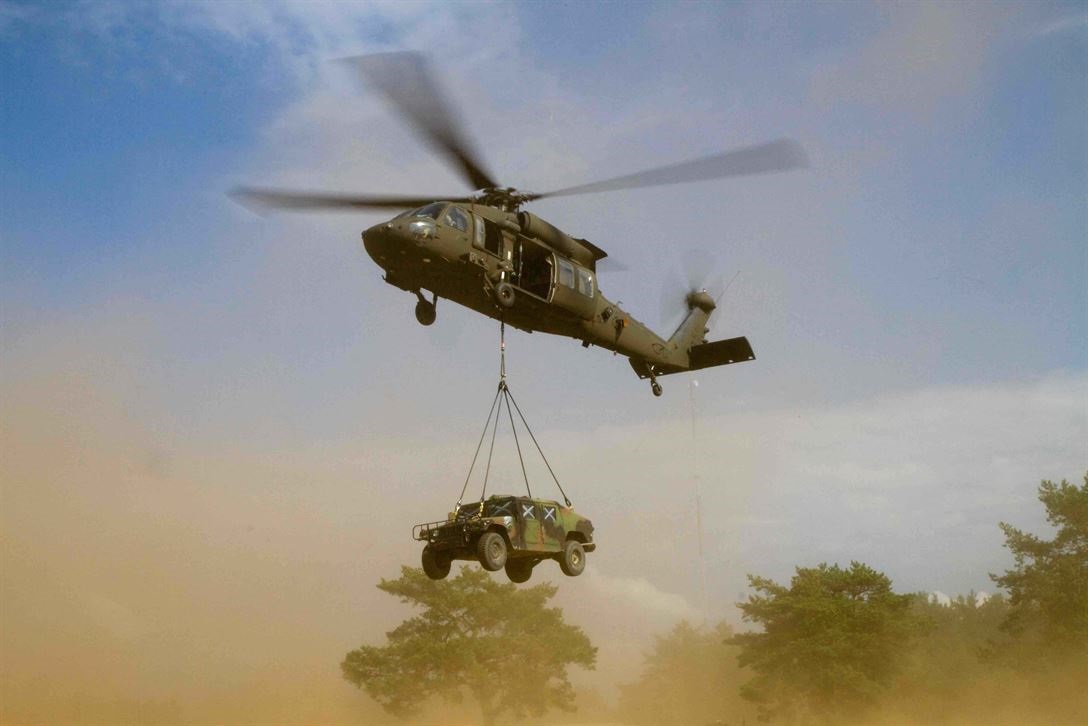
UTC Aerospace builds the flight control system for the UH-60M Blackhawk seen here during sling load training with a High Mobility Multipurpose Wheeled Vehicle during Exercise Uhlan Fury in Lithuania in August, 2015 (Photo: U.S. Defense Department)
NASHVILLE — Representatives of Collins Aerospace Systems believe that the company’s Vehicle Management Computer may benefit the Army Future Vertical Lift program, the company said during the Army Aviation Association of America’s annual conference last week.
Future Vertical Lift “is the next big program we’re trying to get on,” Steven Avritch, the chief engineer of flight controls for Collins Aerospace, said during an interview.
Designed with cyber security in mind, the Vehicle Management Computer is to feature the “triple redundancy” of three multi-core processors and to provide 20 times the processing power of existing flight control computers to enable fly-by-wire and autonomous flight capabilities. The functionality of multiple black boxes will now be on one box, according to Collins Aerospace.
Avritch said the cost will also be lower for the next-generation system than for existing flight control computers, as military and commercial customers will be able to reconfigure hardware and software without having to return the box to Collins and as the Vehicle Management Computer will be able to host third-party applications.
“The customer can do it without having to come back to us,” he said.
Top Army officials, including Gen. James McConville, the service’s vice chief of staff, have been emphasizing the importance of lower cost, open architecture systems in the last several years, and Collins Aerospace officials said that they have taken heed. Collins Aerospace said that the Vehicle Management Computer, which may reach the market by 2022, represents a multi-million dollar investment for the company, which is trying to take advantage of the 25 years of experience it said it has in designing flight control systems for such rotorcraft as the Sikorsky S-92, UH-60 Blackhawk and CH-53K.
Darryl Woods, Collins Aerospace’s general manager of control systems, said that 80 to 85 percent of the baseline model of the Vehicle Management Computer is usable by multiple customers, while the remaining 20 percent represents required customization for particular customer demands.
“It’s basically a supercomputer,” he said of the Vehicle Management Computer.
The computer is to accommodate a variety of add-ons, such as Light Detection and Ranging (LIDAR) sensors, and is to be 100 times more powerful than the computer on the Sikorsky UH-60M Blackhawk, according to Collins Aerospace Systems.